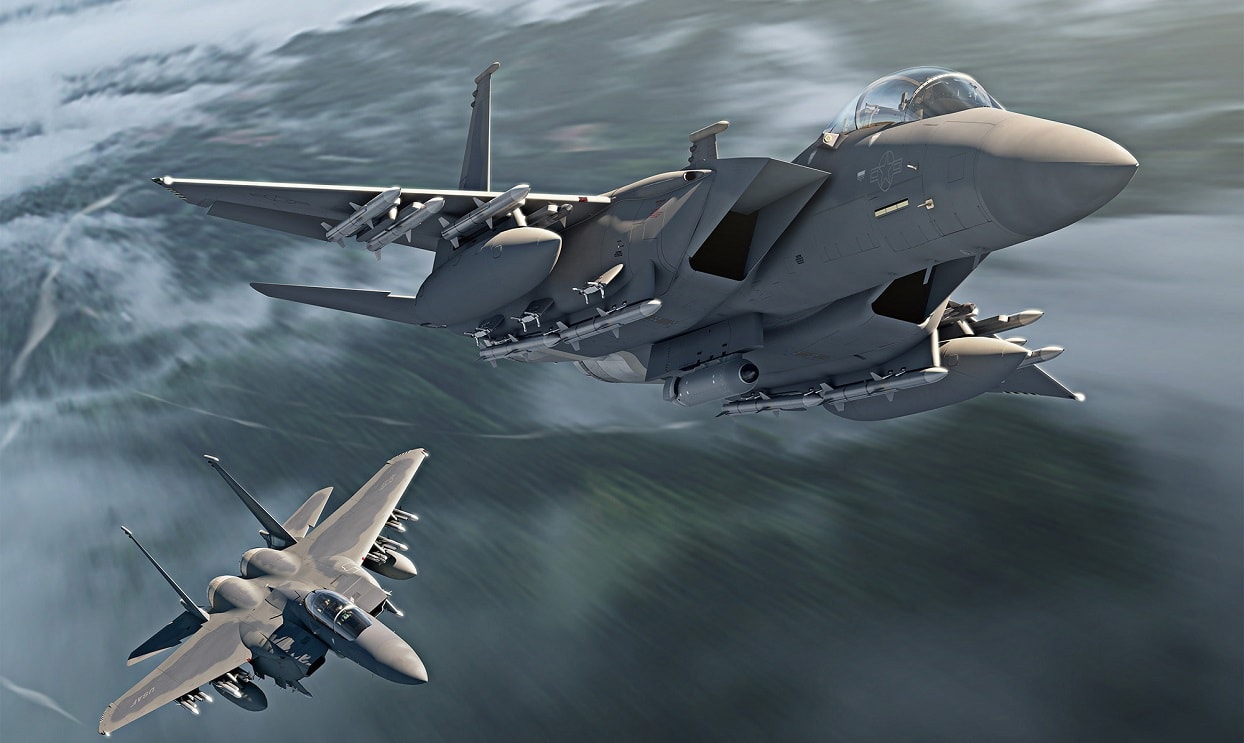Key Points: The F-15EX Eagle II costs more than the fifth-generation F-35A, with a flyaway price of $90 million compared to the F-35A’s $82.5 million. This price disparity stems from several factors: the F-15EX’s retooled production line, supply chain issues exacerbated by the pandemic, and inflation.
-Meanwhile, the F-35A benefits from economies of scale due to its mature production process. While the F-15EX is a new program and could see costs stabilize over time, continued high prices may invite scrutiny from Congress and watchdog agencies.
-Foreign military sales to nations like Indonesia and Poland could eventually help reduce costs.
Why Does the F-15EX Eagle II Cost More Than the F-35A?: You would think that since the fifth-generation F-35 is the one of the most expensive – if not the most expensive weapons program of all time – that it would cost more than the F-15EX.
But that’s not the case. The new F-15EX costs slightly more than the stealth fighter.
An F-35A in 2023 dollars sets the military back around $82.5 million per unit. However, the fourth generation F-15EX has a price tag of $90 million in fly away costs.
How could that be? Since one is stealth and more advanced – while the other is non-stealth – and a variant of the older F-15E Strike Eagle.
A little bit of an explanation is in order:
Price Cycle of the F-15EX Eagle II By Lot
The F-15EX Eagle II price is actually going up and then coming down since the Air Force buys F-15EXs and F-35s in lots.
For example, “the price for an F-15EX will start at ‘approximately’ $90 million for lot 2, rise to $97 million in lot 3, and then dip to $94 million in lot 4,” according to Breaking Defense.
In November 2022, the Air Force purchased lot 1 of the F-15EX at a flyaway price of $80.5 million for six fighters. That was a better deal for taxpayers.

Two Boeing F-15EX fighters armed with air-to-air missiles. Boeing handout.
F-35A Is Cheaper
By comparison, the F-35A is up to the 15th lot. The stealth fighter has an “‘average’ flyaway cost of $82.5 million for the jet’s 15th, 16th and 17th production lots, which will be delivered in calendar years 2023, 2024 and 2025.”
The U.S. Military Pays a Pretty Penny for F-35 Variants B and C
That’s for the Air Force’s F-35A. However, the U.S. Navy and Marine Corps pay more for their variants. The F-35B jump jet for the Marines costs $109 million per unit and the carrier take off and landing F-35C for the Navy is $102.1 million in flyaway costs. So those jets cost more than the F-15EX. But let’s focus on the Air Force’s F-35A for a moment.
Production Cost for the F-15EX Run Higher
One reason the F-15EX rings in more than the F-35A is factory costs. Boeing had to retool the production line, which required significant labor and new investment. Inflation affected this and pushed prices upward. Skilled workers are hard to come by, and they must typically be paid union wages that have gone up over the years.
F-35 Programs Is More Mature
The F-35A, by comparison, has been built for years and is at full-rate production while Lockheed Martin does not have to retool the production line. The manufacturing of the F-35A has been able to create economies of scale. The more you make, the more the production costs go down since the F-35A is a mature airplane.

F-15EX. Image Credit: Creative Commons.
Pandemic and Foreign Military Sales
Also, the F-15EX Eagle II went through the pandemic and had more supply chain shortage issues than the F-35A. This inflation hit the Boeing program harder.
One aspect of both programs is that they export fighters to foreign militaries. The F-15EX Eagle II is going to Indonesia and Poland, which will help the average unit price go down over time.
This May Not Be Such a Big Deal
I wouldn’t read too much into the cost differences. Fighter jet programs are expensive. Yes, at first glance, it appears that the Air Force is getting fleeced with the F-15EX since it is not as advanced as the F-35, but it is a new program working out the kinks.
But This Is Not a Good Sign for the F-15EX Program
We’ll revisit this next fiscal year to see if the F-15EX program can shake some of its early issues and save money. Labor and supply chain costs should stabilize as inflation holds around 2 to 3 percent nationally.
The F-15EX will sell more to foreign customers, pushing average unit flyaway costs down as the program creates more economies of scale – like the F-35A. So, we’ll cut the F-15EX program some slack.
However, if the costs keep going up expect the government watchdogs to show their fangs and investigate the program and Congress could always work to shine light on ballooning costs. That should give incentive for the F-15EX program to become more affordable.
About the Author: Dr. Brent M. Eastwood
Brent M. Eastwood, PhD, is the author of Don’t Turn Your Back On the World: a Conservative Foreign Policy and Humans, Machines, and Data: Future Trends in Warfare, plus two other books. Brent was the founder and CEO of a tech firm that predicted world events using artificial intelligence. He served as a legislative fellow for U.S. Senator Tim Scott and advised the senator on defense and foreign policy issues. He has taught at American University, George Washington University, and George Mason University. Brent is a former U.S. Army Infantry officer. He can be followed on X @BMEastwood.

